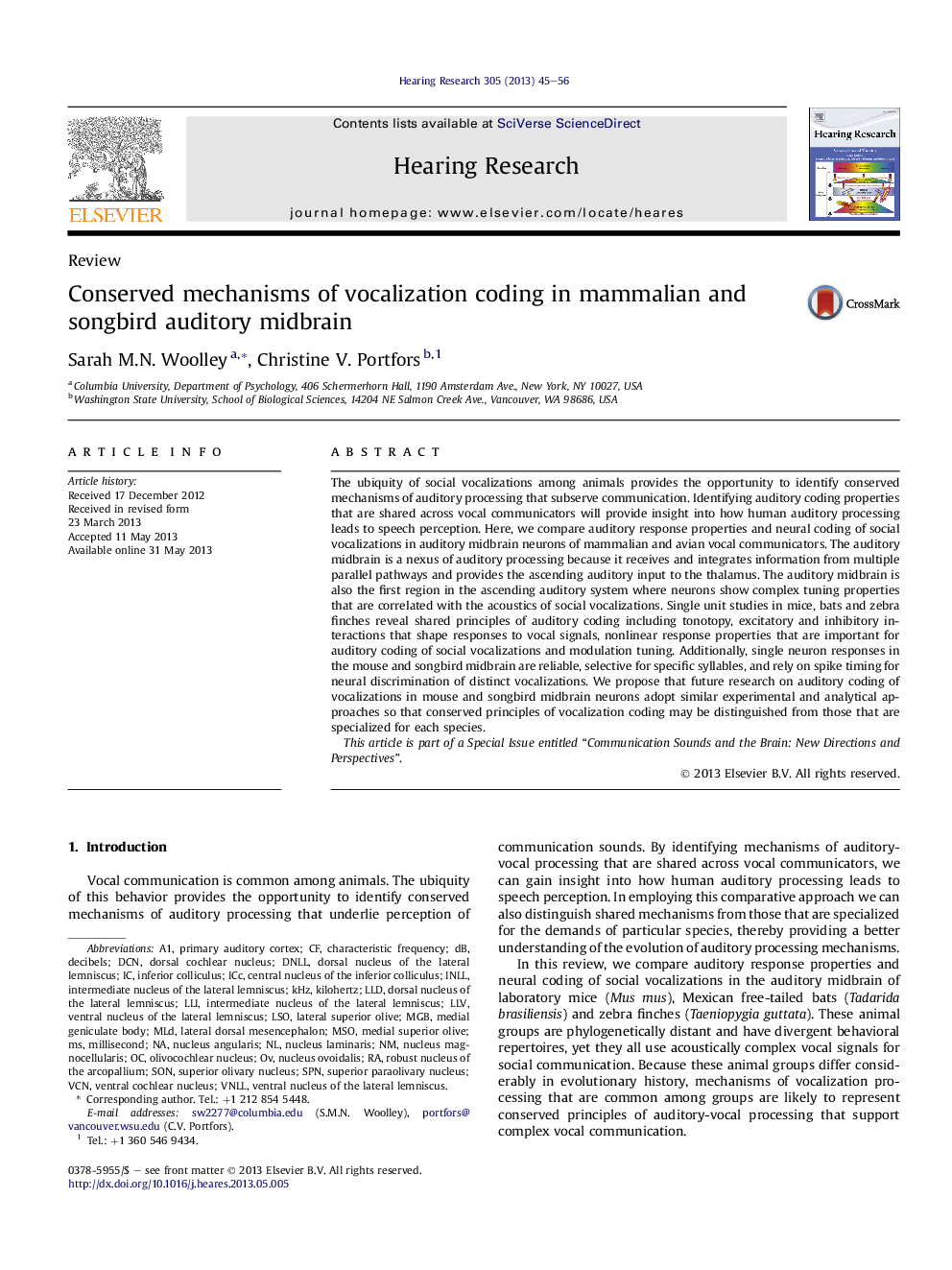| Article ID | Journal | Published Year | Pages | File Type |
|---|---|---|---|---|
| 4355188 | Hearing Research | 2013 | 12 Pages |
•Mice, bats and songbirds produce and perceive complex social vocalizations.•Auditory midbrains of these animals show common basic tuning properties.•Mammal and songbird midbrain neurons have nonlinear coding properties.•Nonlinear coding properties impact auditory coding of social vocalizations.•Songbird and mouse research should share experimental and analytical approaches.
The ubiquity of social vocalizations among animals provides the opportunity to identify conserved mechanisms of auditory processing that subserve communication. Identifying auditory coding properties that are shared across vocal communicators will provide insight into how human auditory processing leads to speech perception. Here, we compare auditory response properties and neural coding of social vocalizations in auditory midbrain neurons of mammalian and avian vocal communicators. The auditory midbrain is a nexus of auditory processing because it receives and integrates information from multiple parallel pathways and provides the ascending auditory input to the thalamus. The auditory midbrain is also the first region in the ascending auditory system where neurons show complex tuning properties that are correlated with the acoustics of social vocalizations. Single unit studies in mice, bats and zebra finches reveal shared principles of auditory coding including tonotopy, excitatory and inhibitory interactions that shape responses to vocal signals, nonlinear response properties that are important for auditory coding of social vocalizations and modulation tuning. Additionally, single neuron responses in the mouse and songbird midbrain are reliable, selective for specific syllables, and rely on spike timing for neural discrimination of distinct vocalizations. We propose that future research on auditory coding of vocalizations in mouse and songbird midbrain neurons adopt similar experimental and analytical approaches so that conserved principles of vocalization coding may be distinguished from those that are specialized for each species.This article is part of a Special Issue entitled “Communication Sounds and the Brain: New Directions and Perspectives”.
